
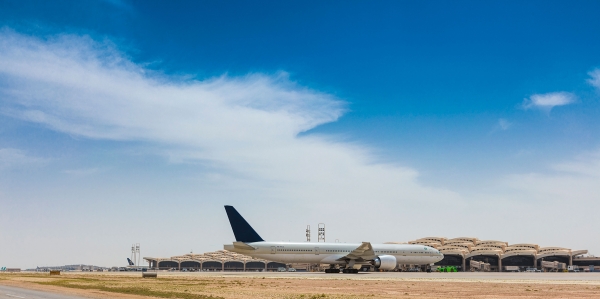
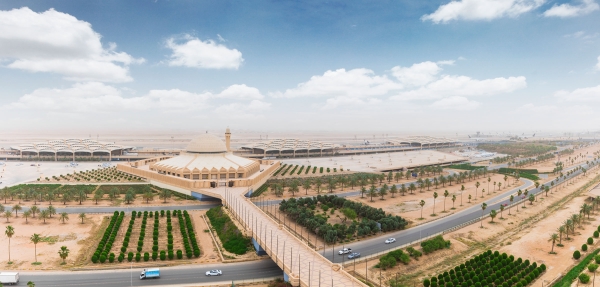
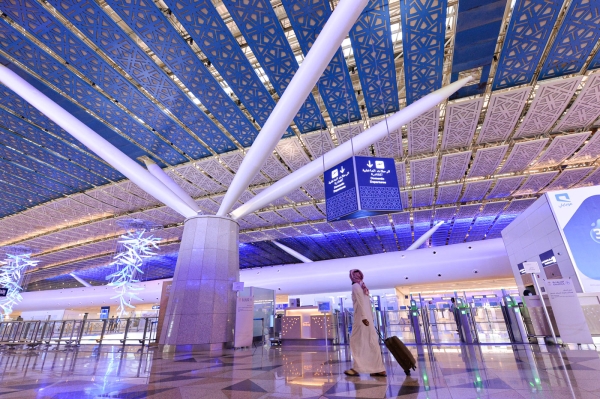
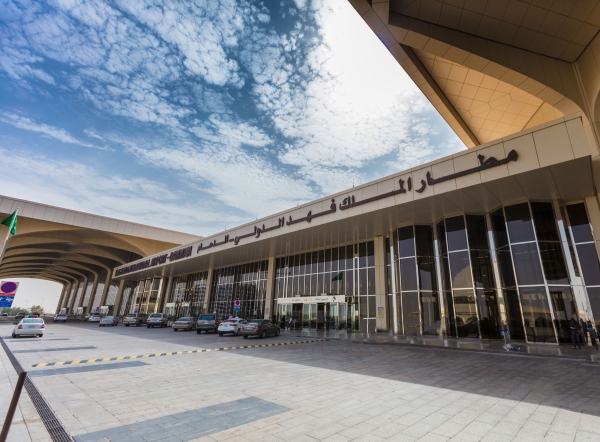
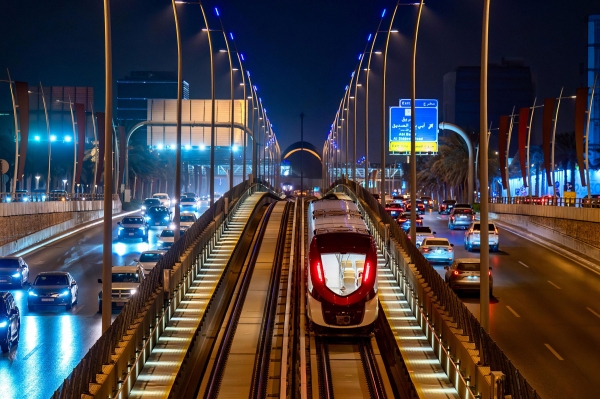
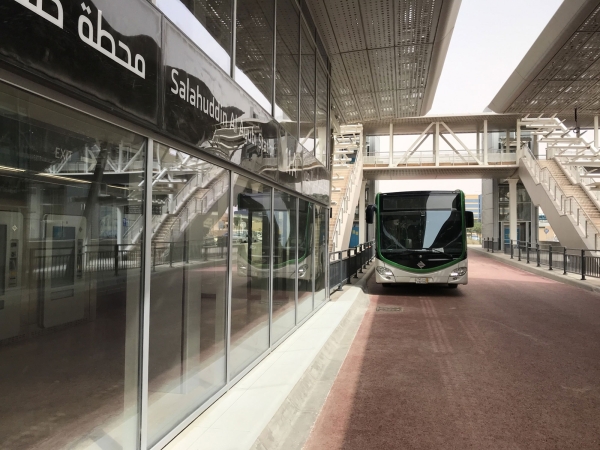
For the transportation and travel for the 2034 World Cup, the Kingdom of Saudi Arabia provides participating teams, fans, and FIFA delegations with the opportunity to benefit from an integrated transportation strategy, developed to ensure an exceptional experience for everyone during the 2034 World Cup. The five host cities have been strategically chosen to ensure fans enjoy a distinguished travel experience, while enhancing the efficiency of transportation services.
Saudi Arabia's transportation network offers a wide range of international travel options and domestic transport services, including air, sea, and land travel, as well as a railway network. Saudi Arabia has sixteen international airports, along with extensive road networks, railways, and public transportation buses, allowing for quick and efficient travel between different provinces.
8 hours to reach Saudi Arabia
Thanks to its strategic location, 60 percent of the world's population can reach the capital, Riyadh, within just eight hours. The number of both local and international tourists is expected to exceed 150 million by 2030, creating 1.6 million job opportunities. Visitors to Saudi Arabia have an unique opportunity to explore a range of cultural sites and diverse natural environments, including seven UNESCO World Heritage sites, along with numerous major projects that offer unique tourist destinations and experiences.
Saudi Arabia intends to support sport tourism and has successfully established its position with a record of hosting major sporting events, with a special focus on football, which is one of the national priorities. Saudi Arabia is preparing to host the 2027 AFC Asian Cup, the 2030 World Expo, and the 2034 Asian Games.
Transportation and travel in Riyadh
King Salman International Airport in Riyadh receives a large number of passengers attending the tournament. The airport's capacity is expected to reach 100 million passengers annually by 2034, representing a 170 percent increase compared to 2023.
Riyadh is also enhancing its public transportation network, with the Riyadh Metro, consisting of six lines, being the largest autonomous train network in the world. Its total capacity will reach 3.6 million passengers by 2034, and the metro will be able to transport up to fifty thousand passengers per hour. The metro connects the city with the airport. A seventh new line to Qiddiya is scheduled to be operational by 2034. The Riyadh Metro is also an important addition to an integrated network of public buses, which will have a capacity of 900,000 passengers daily.
Transportation and travel in Jeddah
Jeddah can be easily accessed by air, sea, rail, and road. Air travelers can reach the city via King Abdulaziz International Airport, which includes several passenger terminals. A new terminal is planned to be built to increase the airport's capacity to ninety million passengers by 2034. Jeddah also boasts one of the fastest trains in the world, traveling at speeds of up to 300 km per hour, connecting the city with the airport and surrounding areas. Additionally, a high-speed rail network links Jeddah with other host cities. Bus services are available throughout the city for eighteen hours daily.
Transportation and travel in al-Khobar
Travelers to and from al-Khobar can use King Fahd International Airport, which is set for expansion to keep pace with the rapid growth of the tourism sector in the region. The expansion work will increase the airport's capacity from 12.5 million passengers to twenty million passengers by 2034. One of the three main railway lines in Saudi Arabia directly links the city to the capital, Riyadh, and it is planned to be upgraded to a high-speed train line. Al-Khobar will also develop a highly efficient, multi-modal transport network, including over four thousand km of roads, four hundred km of public bus routes, as well as a major international airport and three smaller airports. A wide bus network is available in al-Khobar to transport passengers to key locations in the city and surrounding areas. Additionally, "water taxis" provide marine transport services, offering fans a unique travel experience along the coastline.
Transportation and travel in Abha
Travel to and from Abha can be done through Abha International Airport, which will undergo major expansion, including the construction of a new sixty-five thousand m² passenger terminal. This expansion will increase the airport's annual capacity to ninety thousand flights and ten million passengers, with expectations that demand will reach eight million passengers by 2034. Abha will benefit from the significant growth expected in tourism activities in the coming years, supported by comprehensive transportation sector development efforts, focusing on public transport, light transportation, walking pathways, and ease of movement between different areas of the city. A network of dedicated high-capacity bus lanes will be created to link Abha International Airport with King Khalid University Stadium, along with a local bus network serving densely populated areas. These services will facilitate fan mobility during the tournament, as well as support the growth of the tourism sector and improve daily transportation networks. Abha will also provide a dedicated bus service to transport fans to King Khalid University Stadium, with stops in other cities in Aseer province and downtown Abha. During the tournament, 80 percent of the city's residents will benefit from public transportation services, with stations located within a ten-minute walk.
Transportation and travel in Neom
Neom International Airport is the main gateway for travelers to and from the city. The airport, which will be located in the eastern part of the new city, is expected to receive twelve million local and international visitors. Neom International Airport will serve as the main entry point for travelers to and from the city. It is anticipated that the airport, to be built in the eastern part of the city, will accommodate twelve million visitors, both local and international, before 2034. Upon leaving the airport, visitors will be able to reach The Line in less than thirty minutes using high-speed trains and electric cars.
A wide network of buses connecting all Saudi cities will be available, with new bus routes to Neom from other host cities to be operational before 2034. Neom's transportation strategy focuses on creating the world’s first connected, sustainable transportation system. Within The Line, public and personal transportation services will be enabled by a network of automated rapid transport (ART) vehicles, similar to trams, and fast, driverless personal rapid transit (PRT) systems, which will operate on five main horizontal transport routes. These routes will be positioned at elevations of thirty, 150, 250, 350, and 450 m above ground, allowing for rapid and highly efficient transport services. This network will provide comfortable transportation between key locations, including stadiums and fan festival sites. Neom aims to create an energy system that is 100 percent reliant on renewable sources, and the sustainable transportation options within The Line will provide visitors with a unique example of how future cities can utilize renewable energy to operate sustainably.
Related quizzes
Related articles

